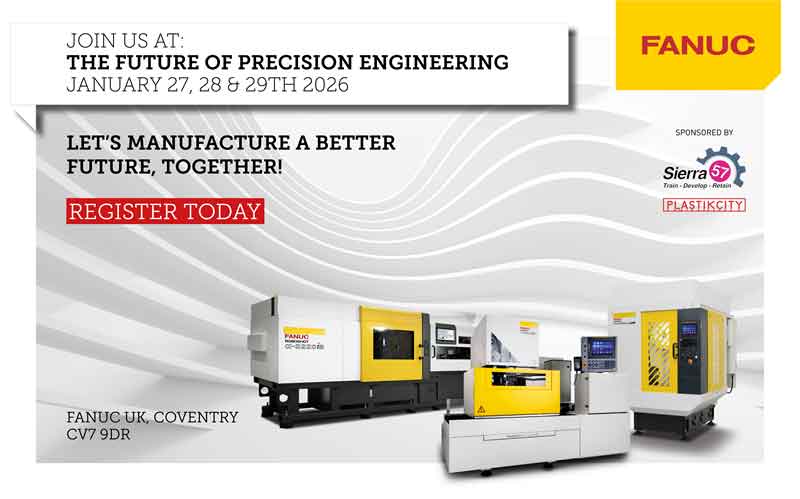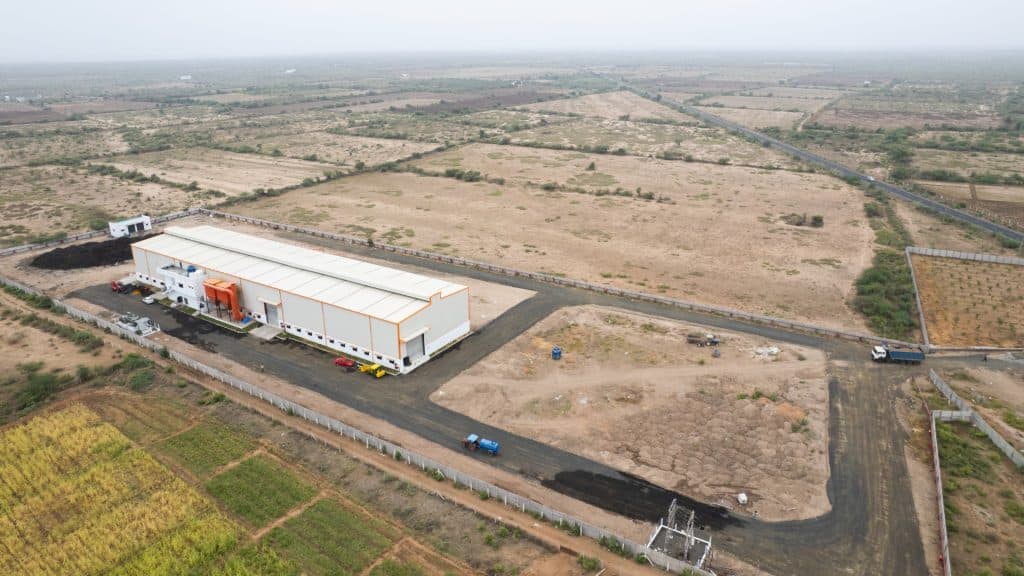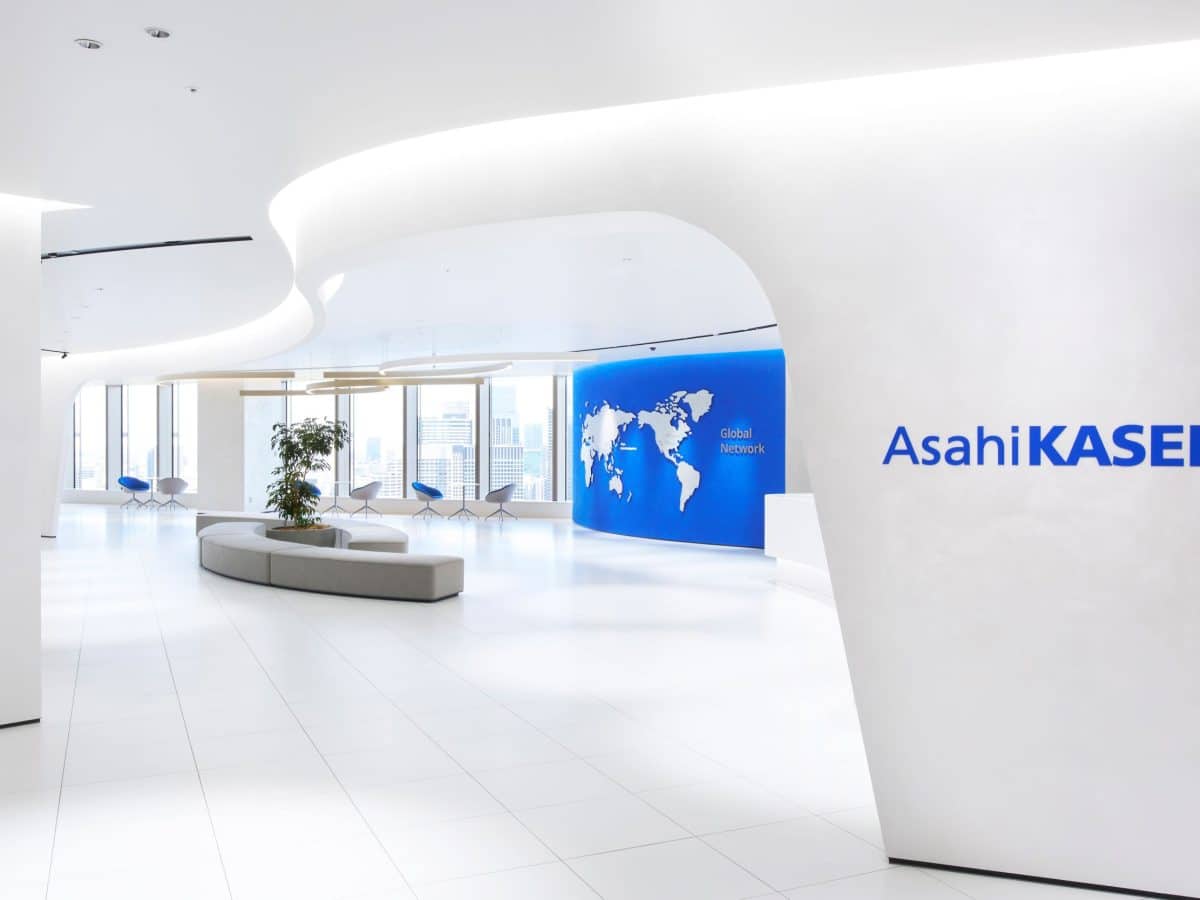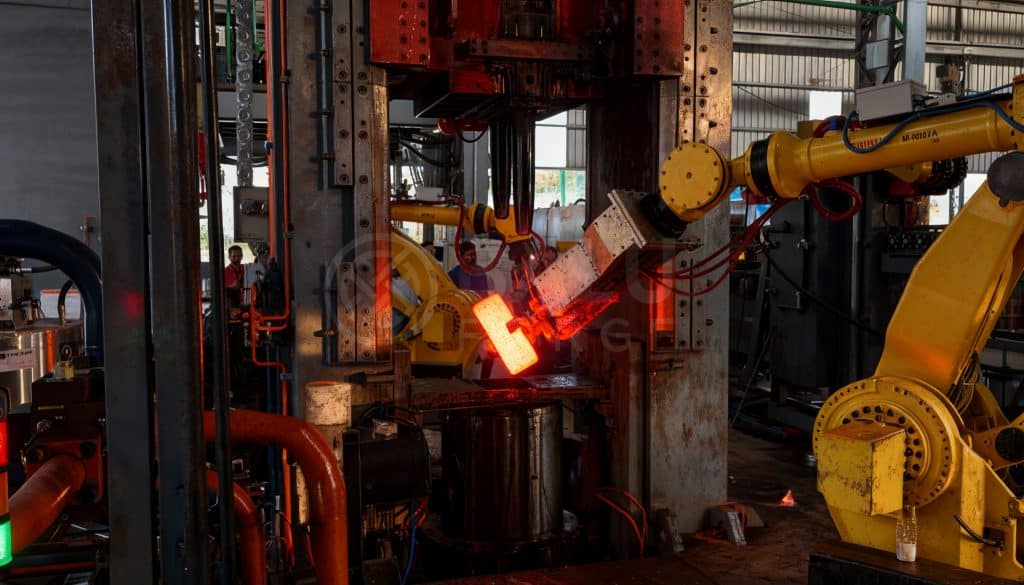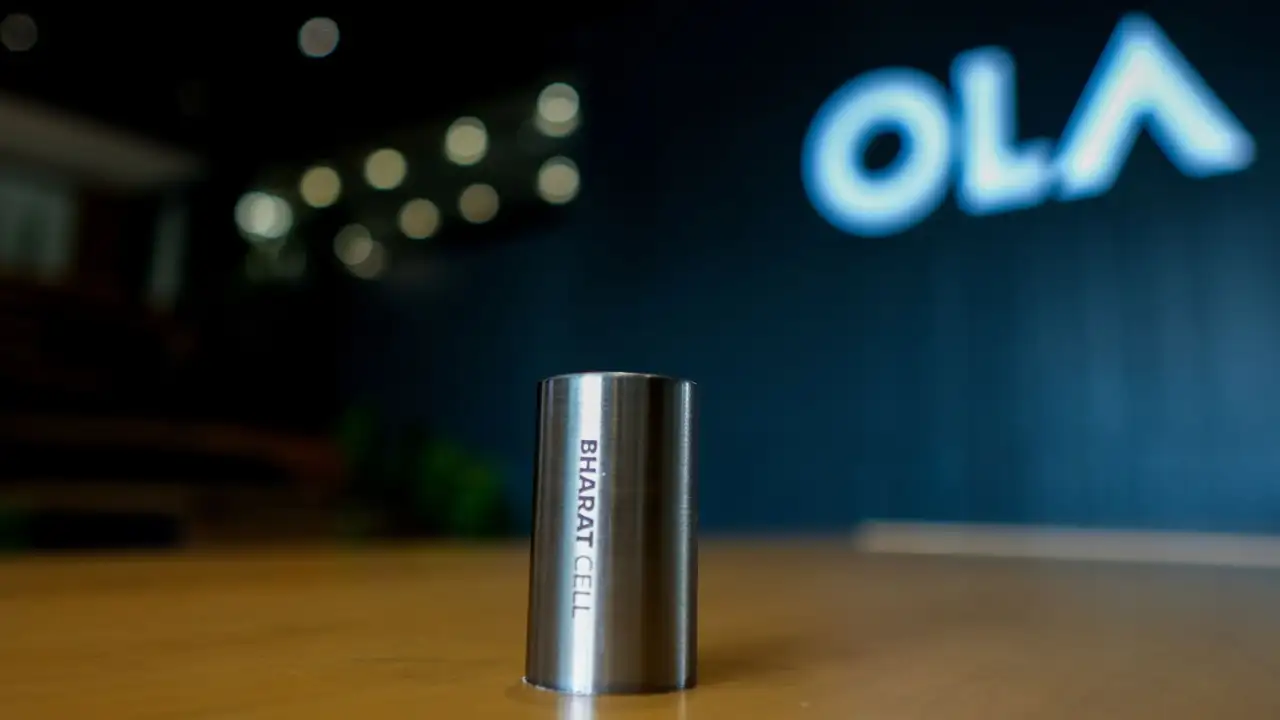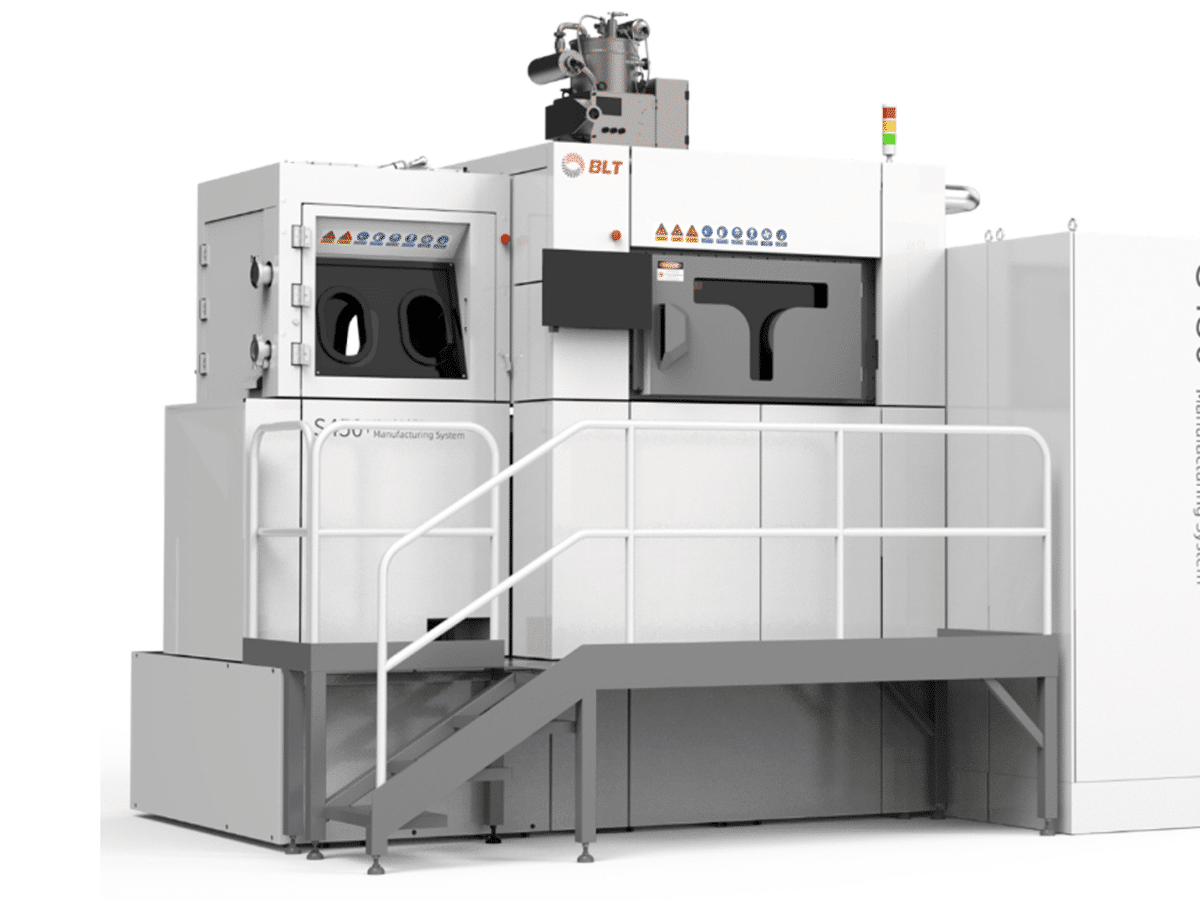
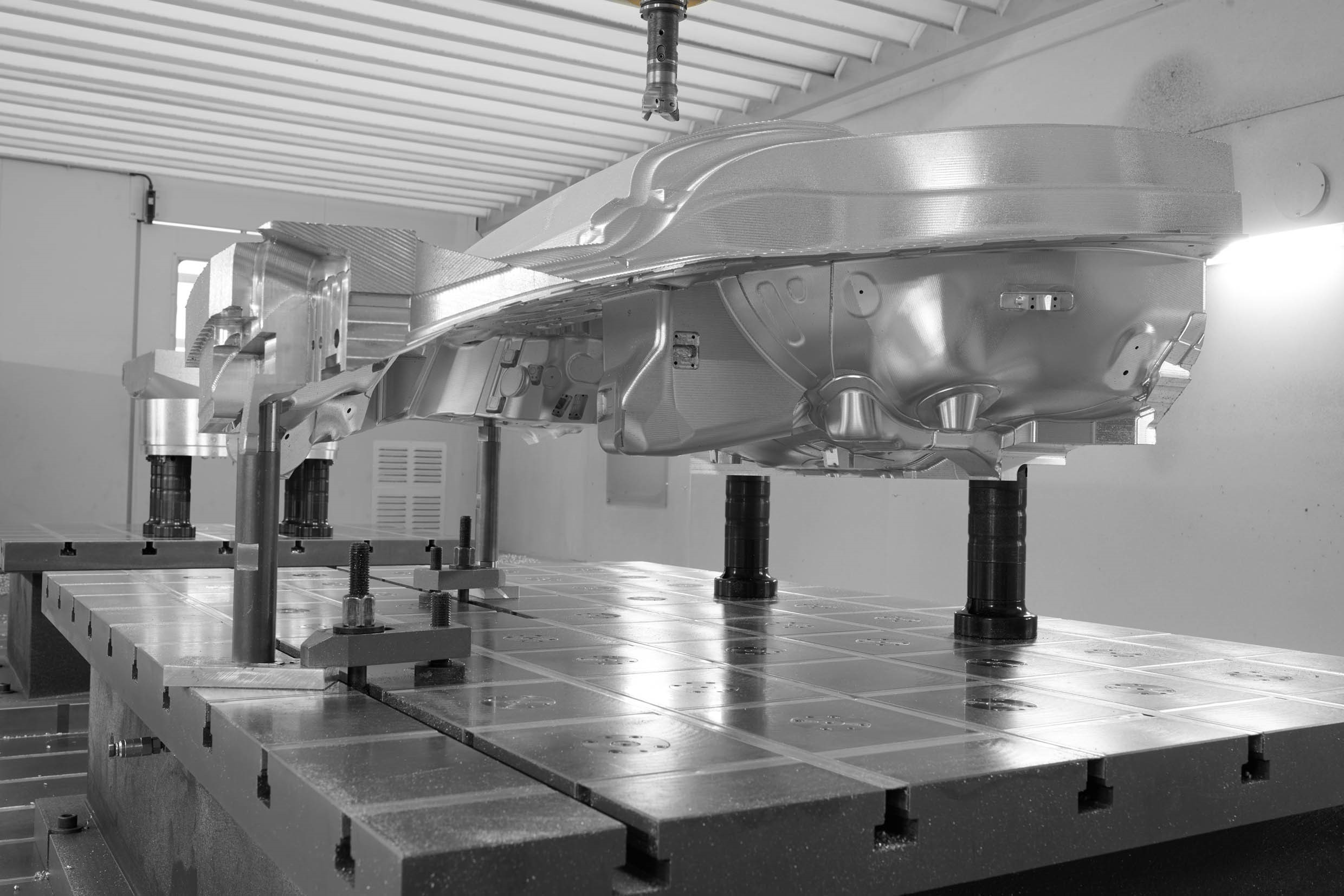
Long before a new car model hits the streets, you could already touch it at MT Technologies – if everything were not so top secret. The model maker that existed before the car was invented, manufactures entire vehicles as a reference and tests models made of aluminium for numerous OEMs. What the experts produce with high machining performance from solid blocks, mostly in batch size, must first be clamped very efficiently. Thanks to the intelligent zero-point clamping technology from AMF, this can be done quickly, flexibly, with high repetition accuracy and process reliability using the modular principle.

“The impulse came from Formula 1,” says Mario Goth, remembering a visit in 2013 to the Sauber Team in Switzerland. The Manager of Mechanical Production at MT Technologies saw with astonishment how effectively the racing engineers clamped individual parts with AMF clamping technology. What the master model builder triggered in his own production operation has now grown into a continuous zero-point clamping system on all necessary machines. With Andreas Maier GmbH & Co. KG from Fellbach (AMF), the Ingolstadt-based company has a competent partner at its side that takes on the challenges of its customers and can offer customised solutions from standard products.
Clamping and set-up processes simplified
and accelerated
“At MT Technologies, they listened to us intently from the very start,” says Erik Laubengeiger from AMF, who provided customer support at the time. Their readiness was great to simplify the complex clamping operations of the aluminium ingots and significantly reduce the long setup and calibration times. “After all, most of the parts that we manufacture are small batches or individual parts of a maximum of four,” says Mario Goth.
When it is finished, the 1:1 scale model looks like a real car, but just made of aluminium. Even the doors and boot lid can be opened. It even sits on aluminium rims. And so the designers and engineers can make an initial three-dimensional image of a newly planned car model and walk around it. Attachment and cladding parts are also attached at the OEMs to verify the fits for subsequent series production. In addition, the clips in the aluminium model are already attached. The final aluminium model can later be found on the assembly line as a test and gauge model.

Small power packages securely grip
The raw aluminium blocks for the individual parts, such as the floor assembly, side parts, roof, boot lid and wheels must be manufactured with corresponding precision on the giant gantry milling machines and clamped precisely beforehand. Two work tables with dimensions of 1.3m by 2m and two with 1.3 by 1m as well as another one are used in the Jobs LinX machines. They are equipped with 50 or 20 K10 zero-point installation clamping modules from AMF at intervals of 200mm. “With the defined grid pitch, each work table offers us the greatest possible flexibility in positioning the elements”, assures Goth. And if a clamping point should be outside the grid or even outside the plate, that is not a big challenge. “With clamping rails, multiple clamping bars or other numerous clamping elements from AMF, we can reach every point that we need for safe clamping.”
The system is just as easy
and logical as Lego
The workers place modular spacer elements on top of each other on the work tables with integrated zero-point clamping modules and cross-T-slots until the block or the blank reaches the appropriate height, so that five-sided machining is possible. The clamping can be planned just as easily as a Lego building kit. The AMF range of connecting, construction and counterbalance elements as well as various adapters is almost inexhaustible. The upper interface to the workpiece is again a mechanical K10 zero-point clamping module, which positions and clamps the M8 or M10 pull-studs screwed into the workpiece in a process-reliable manner. “The system is just as easy and logical as Lego. Everything fits together and can be positioned quickly and precisely thanks to the zero-point clamping technology,” emphasises Christian Vogel from AMF, who is currently working with the Ingolstadt-based company.
The clamping modules in the work table are opened hydraulically at an operating pressure of 60 bar. Each one pulls in the correct pull-stud with 10kN and then holds it tightly with 25kN. Since the modules are intelligently designed and carefully manufactured, they can do this with a repetition accuracy and precision of less than 5µm. And since they are mechanically locked by spring force and tensioned without pressure, the pressure lines are removed after the clamping operation.

Collision-free 5-side machining thanks to
direct clamping
For direct clamping, the holes necessary for the pull studs are made directly in the unmachined part or aluminium block. The engineers already allow for that. To ensure that subsequent processing takes place without any interfering contours and is collision-free, AMF makes CAD data freely available in many common formats for all of its products. “This is an indispensable aid beforehand,” assures Vogel.
The cutting capacity is immense. This adds up to a processing time of up to 40 hours. A boot lid may be milled out of an aluminium block with an initial weight of 1.7 tons, which finally only weighs 90kg. All in all, aluminium blocks of various sizes, totalling around 20 tonnes, are required for a vehicle. It takes about five months for a vehicle to be finished in its original size. Since several spacious halls ensure the strict separation of individual projects from one another, the model-building experts at MT-Technologies can produce up to ten models a year.
Experience and craftsmanship for a 1:1 model
Finally, a new vehicle model in its original size stands in front of the observer long before it comes onto the road. For car manufacturers, this is an indispensable part of a new model’s development phase. And thanks to the experience in model construction and the manufacturing skills of the 150-year-old long-established company, the developers at MT-Technologies already know whether the car will meet their expectations at an early stage. Whether it will then be as classy as a Formula 1 racing car is not realistic, however.


